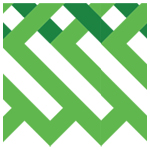More multiplying by ten
The purpose of this activity is to support students to anticipate the result of multiplying a whole number by ten. The factors are extended to include two- and three-digit whole numbers.

About this resource
New Zealand Curriculum: Level 3
Learning Progression Frameworks: Multiplicative thinking, Signpost 4 to Signpost 5
These activities are intended for students who understand multiplication as the repeated addition of equal sets and who have some knowledge of basic multiplication facts. Students should also have an existing understanding of whole number place value, preferably to six places.
More multiplying by ten
Achievement objectives
NA3-1: Use a range of additive and simple multiplicative strategies with whole numbers, fractions, decimals, and percentages.
NA3-2: Know basic multiplication and division facts.
NA3-4: Know how many tenths, tens, hundreds, and thousands are in whole numbers.
Required materials
- place value materials (e.g., BeaNZ, ice block sticks, place value blocks)
- a calculator
See Materials that come with this resource to download:
- More multiplying by ten activity (.pdf)
Prior to this, students should have completed the activity Multiplying by ten.
1.
Pose problems that involve 'ten times more’, with two-digit numbers, such as:
Make the number 23 with place value blocks.
- What number have I made?
- If I get ten times more cubes than what I have now, how many cubes will I have?
Let students predict the result.

2.
Model exchanging each unit cube (a one) for a long block (a ten) and each long block for a flat block (a hundred). Move the blocks into their relevant place value columns.
- What number have we made? What is different about 23 and this number?
- Can we write an equation to describe this problem? (E.g., 23 x 10 = 230).
Key in 10 x 23 = 230 on the calculator and record the equation.


3.
Let the students anticipate and then solve similar problems with materials. Model the operation with place value blocks, if necessary, until students anticipate the result. Good examples are shown below. Ensure students express the relevant equations using a suitable means of expression (e.g., written or verbal) as they work. Also, consider allowing students to work in groupings that will encourage peer scaffolding and extension. Some students might benefit from working independently, while others might need further support from the teacher.
- What number is ten times 36?
- What number is ten times 41?
1.
Progress from using materials to anticipating the results using only equations and words, and then patterns. For example:
- 10 x 3 = 30
- 10 x 43 = 430
- 10 x 543 = 5430
- 10 x 6543 = 65 430
2.
Discuss what happens to the place values of different numbers as they are multiplied by ten:
- Every ten becomes worth 100.
- Every 100 becomes worth 1000.
- Every 1000 becomes worth 10 000.
3.
Provide problems framed in real-life, meaningful contexts in which multiplication by ten can be used.
The quality of the images on this page may vary depending on the device you are using.


